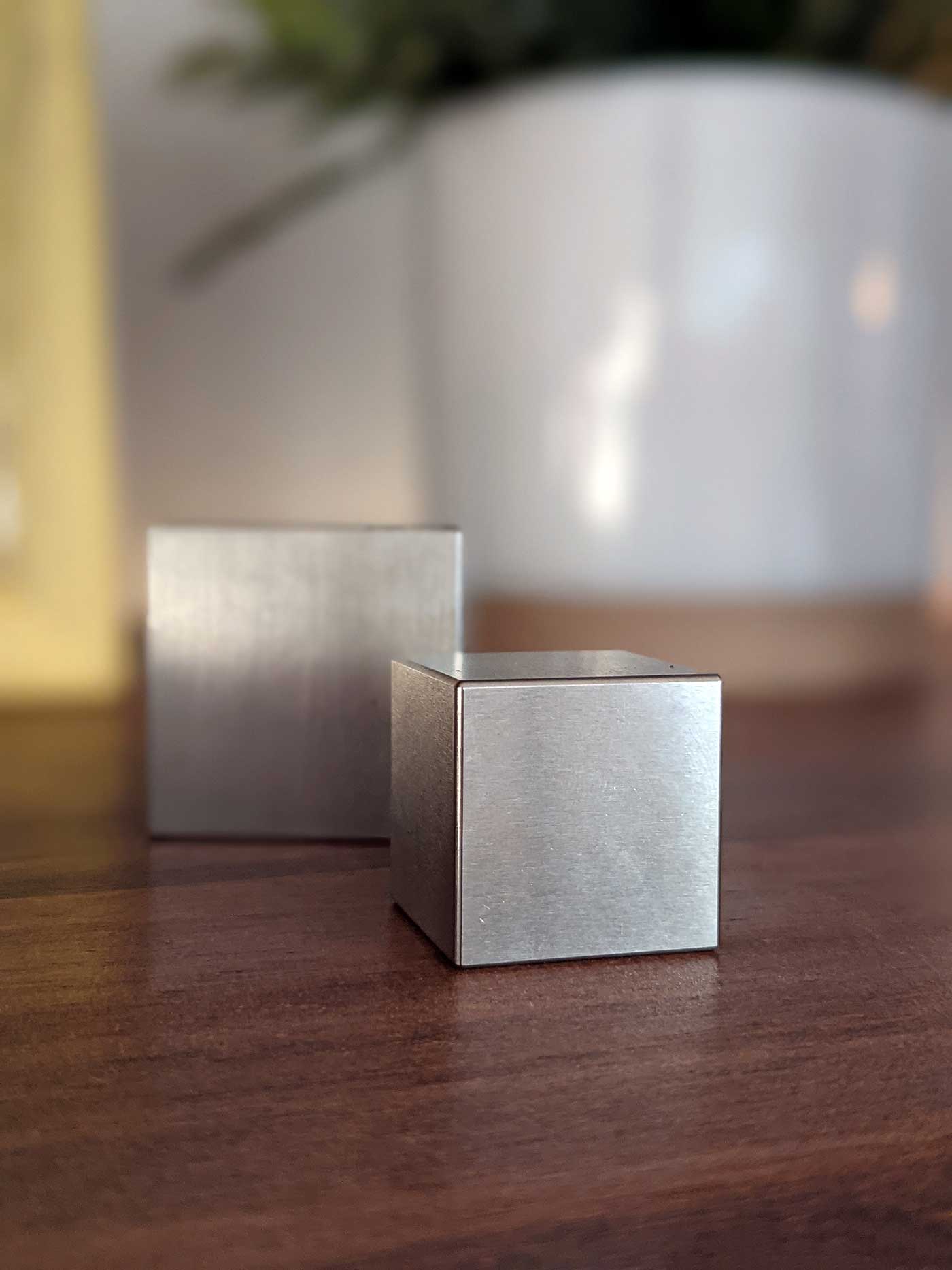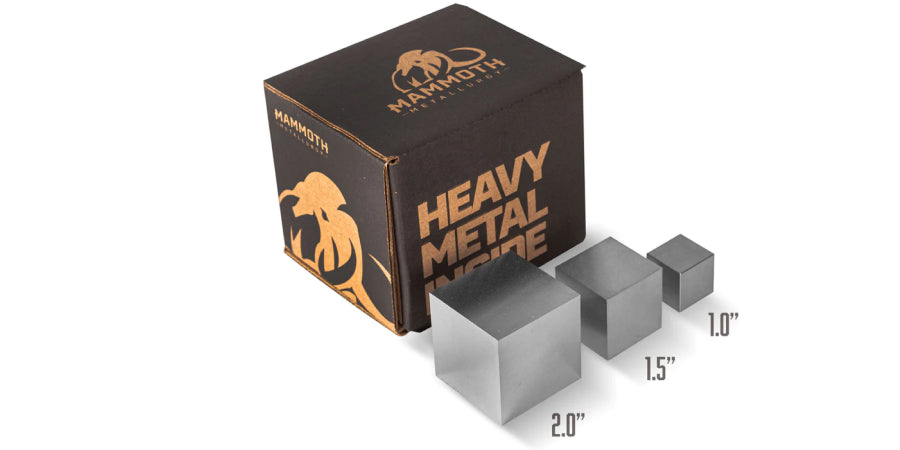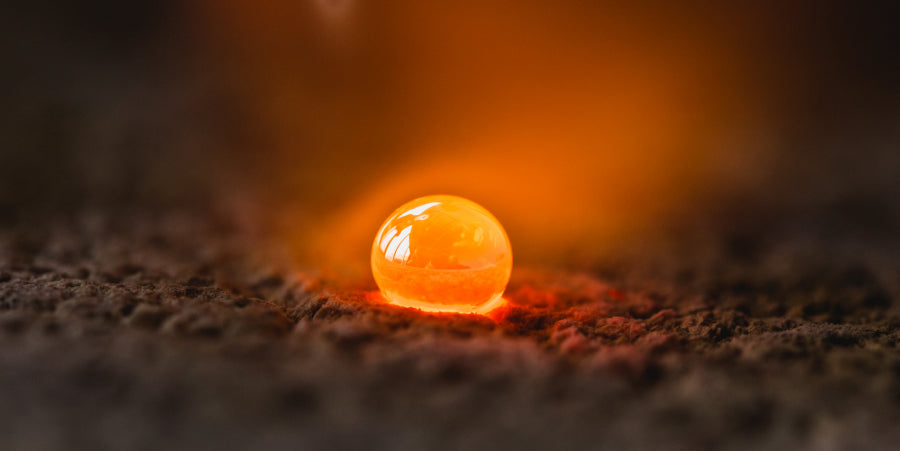
Tungsten is one of the hardest and densest elements found on earth. Even, it is denser than silver and iron and has the highest tensile strength. Moreover, tungsten cubes have become the hottest commodity in the crypto market and the top choice of investors to make massive profits.
It is a very heavy ornament made from aerospace-grade tungsten. Note that pure tungsten is very soft; hence, it hardens when mixed with other metals. Due to the unique density of tungsten, it has several properties that make it rare. However, it has become easy to buy tungsten cubes since they have become so popular. Many companies across various industries are using tungsten for different applications and making a profit out of it.
Besides density, have you considered other aspects that make tungsten cubes so heavy? What chemical properties do they contain, and why do they have so much weight? Let's discuss their chemical properties and understand the reasons that add to the weight of tungsten cubes.
What is Tungsten?
Tungsten cube is a "heavy stone," and tungsten’s symbol is W,which stands for Wolfram. Two Spanish chemists, the de Elhujar brothers, first introduced the pure tungsten metal in 1783. The primary color of tungsten metal is lustrous grayish-white that remains solid at room temperature. In addition, it has the highest melting point and the lowest vapor pressure. It also has the highest tensile strength at a temperature over 1650°C.
Chemical Properties of Tungsten
Tungsten is a heavy metallic element associated with the third series of transition metals. The average weight of a tungsten cube is about 2.21 pounds. The atomic number of tungsten is 74, and its atomic weight is 183.85. The chemical element is the solid, indestructible metal of Group 6 (VIb) in the periodic table. It has extensive use and helps to increase its hardness and strength. In addition, it has excellent corrosion resistance, and it has slight power to attack mineral acids.
One of the most impressive and valuable properties of tungsten is its high melting point, and it incorporates many metallic elements. The pure tungsten metal can melt at 3,422°C (6192 °F) while it boils at around 5,555°C (10,030°F). Like other metallic elements, tungsten is a shiny metal that is possible to isolate chemically from other compounds.
What’s more, tungsten is one of the heaviest metals. It has the ability to react with various other elements. Tungsten cube has a high density, and it depends on the material used in it, which makes it less heavy or heavier. If it has light material and small size, you can easily hold it in the palm.
Most of the products made from tungsten are heavy, and they have high heat resistance. Tungsten cubes also contain 95% pure tungsten. It is one of the rare metals that are dense and hard. Tungsten cubes have industrial use, like they are used in missiles, exhaust tips of rockets, counterweights, and others. Besides, a tungsten cube can be the latest addition to your work table as a decoration piece.
What Makes it so Heavy?
Some tungsten cubes contain alloy, and some do not. If we talk about pure tungsten, it has a specific gravity of 19.25. The pure cube consists of an alloy of 5% tungsten, 1.5% iron, 3.5% nickel.
Here are several reasons why it is so heavy.
If you hold a tungsten cube in one hand and the same volume of silver or iron in the other hand, you will feel that the tungsten cube is heavier. Tungsten's density is about 19.3 g/cm³. Conversely, silver’s density is almost half, about 10.5 g/cm3. In comparison, iron has a one-third density level of about 7.9 g/cm3.
High Density and Hardness
The heavy cube has specific applications. Many industries use tungsten cubes, such as in armor-piercing bullets, due to their high density and hardness.
Researchers suggest that the addition of these alloys enhances the machinability of the metal over non-alloy tungsten. However, non-alloy tungsten is breakable. Moreover, when other elements get added to the cube, it lowers cubes' density down by 18 g/cm^3.
The steel has a density of around 8.05 g/cm3, and lead has a density of approximately 11.35 g/cm3. So, the alloyed cube has more than half of the density. In general, the 1.5″ cube usually has a mass of about 1 kg.
Other Complex Substances
As discussed above, the tungsten cube is surprisingly heavy. It is similar to something that pulls downwards and is associated with strong magnets. In addition, the more complex substances are corundum; carbides of silicon, titanium, and tungsten; boron; and diamond.
Another reason the cube is heavy is it encompasses pure elements. Tungsten has a melting point of 3400°C (6152°F) when it is pure. It will act like other heavy alloys, and it will start to convert in liquid form if we add W-Ni-Fe alloy to it while heating. Studies suggest that most magmas have a temperature of about 700-1300°C (1300-2400°F).
Also, W-Ni-Fe alloy is too complex, and its hardness is up to 262 kg/mm². Moreover, regular steel has 4-4.5 hardness while hardened steel is 7.5-8.
Bottom Line:
Tungsten cubes are heavy and expensive due to several reasons, as discussed above. So, if you want a tungsten cube considering all the above information, one of the most trusted platforms is Mammoth Metallurgy.
We offer a wide range of tungsten cubes in different sizes at Mammoth Metallurgy that can meet your needs. You can get a desktop tungsten cube to use as a decoration piece or a small size for experiments or to check its destructibility. We have a large variety, so you can find one that attracts you the most.
Sources
https://svpow.com/2018/02/26/off-topic-what-will-happen-to-my-tungsten-cube/
https://science.howstuffworks.com/tungsten.htm
https://www.americanelements.com/tun
https://hitechglitz.com/a-1-ton-tungsten-cube-was-just-bought-by-a-crypto-cabal-for-250000/


